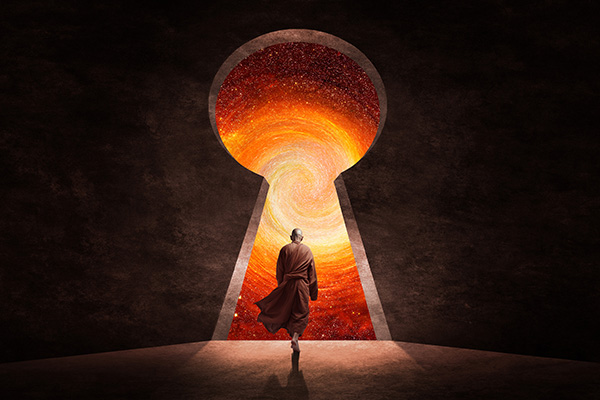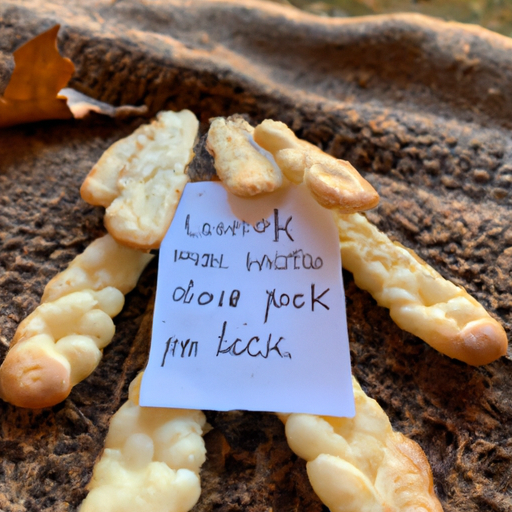The Journey of Existence in a Realm of Transcendence
 Numerous individuals might assert that they exist in a realm of spiritual enlightenment, claiming to be profoundly aware and connected to the divine. Yet, what many perceive as enlightenment often falls short of the actual truth.
Numerous individuals might assert that they exist in a realm of spiritual enlightenment, claiming to be profoundly aware and connected to the divine. Yet, what many perceive as enlightenment often falls short of the actual truth.
A veil — a mental obstruction — exists for most individuals, hindering their ability to see the profound spiritual realities that transcend the mundane world. While many yearn to lift this veil and peer beyond the superficial into a broader reality, achieving this state of bliss can prove to be exceedingly challenging.
Nevertheless, once you manage to break through, the sensation of liberation and freedom is unparalleled. It’s a feeling that is hard to express in words, but it is something every individual can attain.
The journey toward transcendence represents a path of spiritual development and evolution of the soul. Upon reaching this euphoric state — when your spirit has genuinely broadened — you ascend to a higher frequency, one distinct from that to which most individuals resonate.
Throughout much of my life, I perceived myself as an outsider — someone who never quite fit into the conventional world. I felt estranged from societal norms and expectations. However, today, I embrace that sensation. I have come to understand that being an individual, detached from the world’s turbulence, is among the most precious gifts I could possess. I no longer feel the need to belong to a specific group or to conform to particular societal expectations. This freedom enables me to live authentically and assist others in attaining the same level of bliss and spiritual insight.
From my perspective, this spiritual endeavor is one of liberation. When you surpass the material domain, you free yourself from its distractions. Instead, you dwell in a state of heightened awareness and tranquility. And there is nothing more exquisite or rewarding than this.
Who would then deny that when I am sipping tea in my tearoom I am swallowing the whole universe with it and that this very moment of my lifting the bowl to my lips is eternity itself transcending time and space? ~ D.T. Suzuki
Joyful Detachment From The World
One of the most significant transformations you can undergo as you begin to rise above the physical realm is a feeling of detachment from the chaos and drama that saturate contemporary life. In this elevated state of awareness, you may find that the urge to consume news or follow the latest TV series or trends diminishes. Such distractions may seem insignificant — and indeed, they are. As you ascend to higher levels of spiritual consciousness, you recognize that these elements only serve to distance you from your true self. Consequently, your attention shifts to what truly matters — inner tranquility, spiritual advancement, and communion with the Divine.
Existing from this position of awareness instills a profound sense of gratitude. You come to the realization that the time dedicated to your spiritual development was not merely worthwhile, but also the most significant and fulfilling investment in yourself. When worldly concerns no longer hold your focus, you attain a profound comprehension of what it truly means to be alive and interconnected with the Universe. You begin to understand that this blissful state is not something to chase, but rather something to be savored in the current moment through practice and commitment.
The majority of individuals remain deeply entrenched in the material world. They obsess over what’s next — the latest trend or possession — thinking these will bring them joy. The issue with this mindset is that material wealth can only deliver fleeting gratification. Regardless of how much we acquire, it typically leaves us feeling as though our “cup is half empty”— a sense that something deeper is lacking.
True happiness, the pinnacle of contentment, isn’t found in the external realm, but through our ability to transcend the physical sphere, moving beyond its distractions to forge a connection with God, Source, Spirit, the Divine.
This spiritual bond — this elevated experience — is where we uncover the tranquility and joy we seek. We cease to seek fulfillment externally, and begin to realize that the most genuine happiness springs from within. The transcendental experience is so potent that once you’ve encountered it, you will recognize that it offers far more liberation and satisfaction than any material acquisition or worldly achievement could ever provide.
To live on a day-to-day basis is insufficient for human beings; we need to transcend, transport, escape; we need meaning, understanding, and explanation; we need to see over-all patterns in our lives. We need hope, the sense of a future. And we need freedom ~ Oliver Sacks
Through personal experience, I have discovered numerous means to reach this transcendental state. The most impactful spiritual practices I employ to tap into this heightened frequency of connection are:
Meditation
Meditation is likely the most accessible and effective method for attaining transcendence. It provides a period of quiet, uninterrupted contemplation, cultivating an inner silence that fosters spiritual growth. With regular practice, meditation transforms into a sacred space where the mind can rest, free from external distractions, creating an ideal environment for personal development.
The advantages of meditation are numerous, but the most profound aspect may be the bliss that emerges when you calm your mind and open your heart. In this state, the clamor of the material world dissolves, allowing you to connect with a deeper, more universal truth. Within this stillness, we uncover our true essence and are reminded of the infinite potential that resides within us.
Meditation possesses the power to transport you to a realm where you can feel the divine presence in a deeply personal and intimate manner. In this space, time and space lose their hold, and you are enveloped by a profound sense of peace and connection. This feeling, which transcends the constraints of our physical reality, empowers you to access higher states of awareness and align with the spiritual frequencies that lead to greater wisdom and insight. Through this inner practice, you can establish a lasting connection to spirit and the divine, nurturing your soul and enhancing every facet of your life.
Prayer
Prayer has been fundamental to my spiritual practice for numerous years, offering a direct channel of communication with spirit and the divine. Over the years, I’ve come to realize that prayer isn’t merely about requesting things but involves aligning myself with the greater flow of spiritual energy. It serves as an opportunity to open my heart and mind to receive guidance, clarity, and protection from higher realms. Whether I’m expressing gratitude, seeking direction, or simply resting in the divine presence, prayer helps me center myself and reconnect with my highest purpose.
Through prayer, I have encountered moments of profound transcendence – times when I felt intensely connected to the divine source. These moments have bestowed a great sense of peace and have aided me in approaching life’s challenges with grace.
Prayer functions as a remarkably powerful tool, capable of shifting energy, invoking protection, and inviting divine wisdom into my life. Within my psychic work, prayer bolsters my connection with my spiritual guides and provides the clarity essential for assisting others. I encourage you to integrate prayer into your own routine, as it offers a sacred space for seeking divine support, gaining insight, and fostering your spiritual growth.
Astral Travel
Astral travel stands as another potent practice that enables you to transcend the limitations of the physical body, allowing for a sense of freedom and connection beyond our standard state of existence. During astral travel, the soul temporarily departs the physical body, exploring other realms and experiencing elevated states of consciousness.
I find immense joy in astral travel, as it consistently provides me with a sense of transcendence, of being liberated and wholly connected to the universe. It’s a magic accessible to anyone. If you’re intrigued by the prospect of learning how to astral travel, I’d gladly share techniques and insights with you during a reading.
Dream Journaling
Over the years, I have honed my ability to recall significant dreams and document as much as I can remember, making this practice an invaluable aid in both my personal life and psychic work. Dreams act as a bridge connecting the material world with the spirit realm, offering profound insights and direction. They frequently convey spiritual messages, reflections on our soul’s path, and clarity regarding waking life situations. By maintaining a dream journal, I’ve learned to discern recurring symbols and patterns that unveil deeper layers of my spiritual growth, aiding my connection with the guidance received during sleep.
Dreams have also played a crucial role in my psychic work, often presenting me with visitations from departed loved ones or intuitive insights that surface in the dream state. This practice has heightened my sensitivity to the wisdom and messages that come through during sleep, enabling me to better assist others during my readings. A dream journal has facilitated my connection to this flow of spiritual guidance, enriching my relationship with higher frequencies of awareness and supporting my ongoing spiritual evolution. I encourage others to initiate a dream journal, as it can significantly enhance your connection to the divine and facilitate your growth in transformative ways.
Spirit Visitations
Another experience worth noting is that of spirit visitations, wherein loved ones who have transitioned from the physical world to the spiritual realm come to visit us. These encounters can be profoundly transforming as they facilitate our experience of the deep bond between the physical and spiritual realms.
For me, my grandfather’s visits consistently serve as a moment for transcendence. His presence reassures me of the deeper spiritual truth that exists beyond the tangible, and each encounter fills me with tranquility and a sense of belonging to something far greater than myself.
Experiencing transcendence propels us into a realm that isn’t easily accessible through our ordinary waking consciousness. We enter a higher vibrational space, one where God, Source, Spirit, and the Divine reside. This state is often described as an intense feeling of peace, clarity, and bliss. The extraordinary freedom accompanying it is challenging to articulate in mundane terms.
If you possess the discipline and commitment to dedicate time to solitude, meditative endeavors, and spiritual introspection, you’ll discover that accessing this state of bliss is not as elusive as it may seem. Over time, you will be able to reach it more readily and frequently.
Achieving this level of transcendence is a profound transformation. Once you connect to this elevated frequency, life becomes more beautiful and spiritually rewarding. You learn to detach from the distractions and clamor of the world.
As you loosen your grip on material concerns, you begin to operate from a space of spiritual awareness — a realm unbound by the limitations of the physical world. You start to recognize that genuine joy and fulfillment arise not from external situations, but from your intrinsic connection to the higher realms.
|
Moon Goddess is a third generation empathic healer and seer. She began offering healing readings over 20 years ago. Her fascination with and study of all things metaphysical started at an early age. Possessing hypersensitivity, she can perceive and visualize events before they transpire. Utilizing the Tarot, and with the assistance of her Guides, she has become a source of support for countless individuals worldwide. After his passing, her grandfather upheld his promise by returning to bid farewell, providing her with an extraordinary experience. Moon is convinced there exists a Heaven, and it is magnificent! Sharing her experiences has aided many dealing with loss or any form of grief. Experience a reading with Moon Goddess now at PsychicAccess.com. |
The Experience of Living in a State of Transcendence
Existing in a state of transcendence is a notion that has captivated philosophers, spiritual leaders, and individuals in search of a profound understanding of life for centuries. It denotes a state of being that surpasses ordinary, mundane existence and connects with something grander than oneself. This transcendent state can be accessed through various methods, such as meditation, religious practices, or even moments of awe and inspiration. In this piece, we will delve into the experience of living in a state of transcendence and its potential advantages.
Transcendence can be characterized as a state of heightened awareness and consciousness, where one feels a sense of unity with the surrounding world. It is a condition that crosses the boundaries of the individual ego and taps into a collective consciousness or a higher power. This experience can be deeply transformative, leading to a significant shift in one’s perspective and comprehension of life.
One of the most prevalent ways in which individuals experience transcendence is through meditation. By quieting the mind and concentrating on the present moment, people can rise above their everyday anxieties and concerns. In this state, they might feel peace, clarity, and a connection to something greater than themselves. This connection can be perceived as belonging to a more extensive whole, be it the universe, nature, or a divine essence.
Religious traditions also provide a path to transcendence. Many faiths incorporate rituals, prayers, and ceremonies aimed at connecting individuals with a higher power. Through these means, individuals frequently report feelings of transcendence, experiencing a profound bond with their beliefs and a significant sense of meaning and purpose in life.
Moments of awe and inspiration can further guide one into a state of transcendence. Whether it’s marveling at a stunning sunset, absorbing a beautiful piece of music, or encountering extraordinary natural wonders, such moments can evoke feelings of wonder and exhilaration. In these instances, individuals may feel a deep connection to their environment and a sense of being part of something larger than themselves.
Living in a state of transcendence can confer many benefits. First and foremost, it can impart a sense of meaning and purpose in life. When individuals feel connected to something larger than themselves, they frequently discover a deeper sense of direction and significance. This awareness can lead to increased fulfillment and satisfaction in life.
Furthermore, transcendence can foster a sense of peace and inner tranquility. By rising above the worries and stresses of daily life, individuals can find relief from anxiety and tension. This can contribute to enhanced mental and emotional well-being.
Additionally, living in a transcendent state can cultivate a deeper sense of empathy and compassion towards others. When individuals recognize their connection to a larger whole, they are more likely to develop a broader understanding and appreciation for the interconnectedness of all beings. This realization can inspire more compassionate and selfless behavior, as individuals acknowledge the inherent value of all life forms.
In summary, inhabiting a state of transcendence offers a profound and transformative experience. Whether through meditation, religious practices, or moments of awe and inspiration, individuals can engage with a higher consciousness and connect with something beyond themselves. This experience can provide meaning, peace, and compassion, ultimately leading to a more fulfilling and purpose-driven existence. Continue reading
















